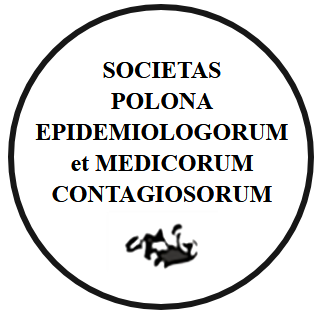ABSTRACT
INTRODUCTION. Dental caries is a transmissible chronic disease of dental hard tissues. To monitor the course of carious process, age reference groups were designated which are subject to regular dental check-ups. The groups include children aged 6, 12, and 18 years as well as adults at the age of 35-44 and 55-64 years.
AIM. The aim of the study was to evaluate the state of dentition and effectiveness of treatment among children and adolescents in the reference groups aged 6, 12, and 18 years from the town of Skierniewice and its region in the years 2017-2020.
MATERIAL AND METHODS. The study included 385 children and adolescents from the reference groups.
Dental examination was carried out in the dental office of the Ogrodowa Medical Centre in Skierniewice. Dental caries intensity expressed by the the DMFT index, and its particular components, D, M, and F (D– the mean number of teeth with caries (decayed), M– teeth extracted (missing), and F– filled) as well as the dental caries treatment index DTI (F/(D+F)) were determined according to sex.
RESULTS. Distribution of the DMFT index components was very similar in children aged 6 years and in 18-year-old adolescents. The D component constituted half the DMF index (50.7% in 6-year-olds and 52.4% in 18-year-olds), the M component values were lowest (16.1% and 12.3%, respectively) while the F component accounted for slightly more than 1/3 of the whole value (33.2% and 35.3%, respectively). In 12-year-olds, the D component value was 68.4% of the DMF index, the M component accounted for only a few percent (4.5%) and the F component was 27.1%. The DTI value was 0.40 for 6-year-olds and 18-year-olds and appeared to be significantly higher than in the group of 12-year-olds (0.3).
CONCLUSIONS. There is an urgent need for monitoring the dental status, professional caries prevention, and conservative treatment of teeth in children and adolescents of the Skierniewice region.
STRESZCZENIE
WSTĘP. Próchnica jest transmisyjną, przewlekłą chorobą twardych tkanek zęba. W celu monitorowania przebiegu procesu próchnicowego wyznaczono referencyjne grupy wiekowe poddawane regularnym przeglądom stomatologicznym. Są to dzieci w wieku 6, 12, 18 lat oraz osoby dorosłe w wieku 35-44 i 55-64.
CEL. C elem p racy b yła o cena s tanu u zębienia i efektywności l eczenia d zieci i młodzieży w grupach referencyjnych 6, 12 i 18 lat ze Skierniewic i okolic w latach 2017-2020.
MATERIAŁ I METODY. Badaniu poddano 385 dzieci i młodzież z grup referencyjnych. Badania przeprowadzono w gabinecie stomatologicznym Centrum Medycznego Ogrodowa w Skierniewicach. Oceniono intensywność próchnicy wyrażoną wskaźnikiem PUWZ z uwzględnieniem poszczególnych składowych P,U,W (P– średnia liczba zębów z próchnicą, U– średnia liczba zębów usuniętych i W– średnia liczba zębów wypełnionych) oraz wskaźnik leczenia zębów WL (W/(P+W)) w zależności od wieku i płci.
WYNIKI. Udział poszczególnych składowych wskaźnika PUW był bardzo zbliżony u dzieci w wieku 6 i 18 lat. Połowę wskaźnika PUW stanowiła składowa P (50,7% u 6-latków i 52,4% u 18-latków), wartości składowej U były najniższe, odpowiednio (16,1% i 12,3%, natomiast nieco ponad 1/3 to składowa W (odpowiednio 33,2% i 35,3%). W przypadku 12-latków, składowa P wynosiła aż 68,4% wskaźnika PUW, składowa U to zaledwie kilka procent – 4,5%, a składowa W – 27,1%. Wartość wskaźnika leczenia w grupie 6-latków i 18-latków wynosiła 0,40 i była istotnie wyższa niż w grupie 12-latków – 0,3.
WNIOSKI. Istnieje pilna potrzeba monitorowania stanu uzębienia, profesjonalnej profilaktyki próchnicy i zachowawczego leczenia zębów u dzieci i młodzieży regionu skierniewickiego.
You can change cookies settings in your browser. Restricted use of cookies in the browser configuration may affect some functionalities of the website.





